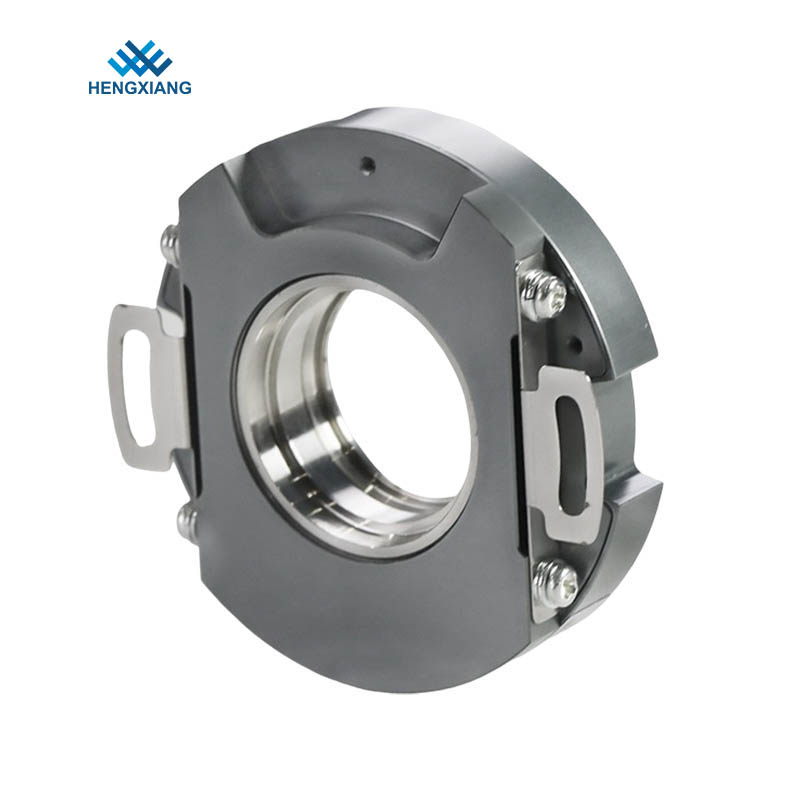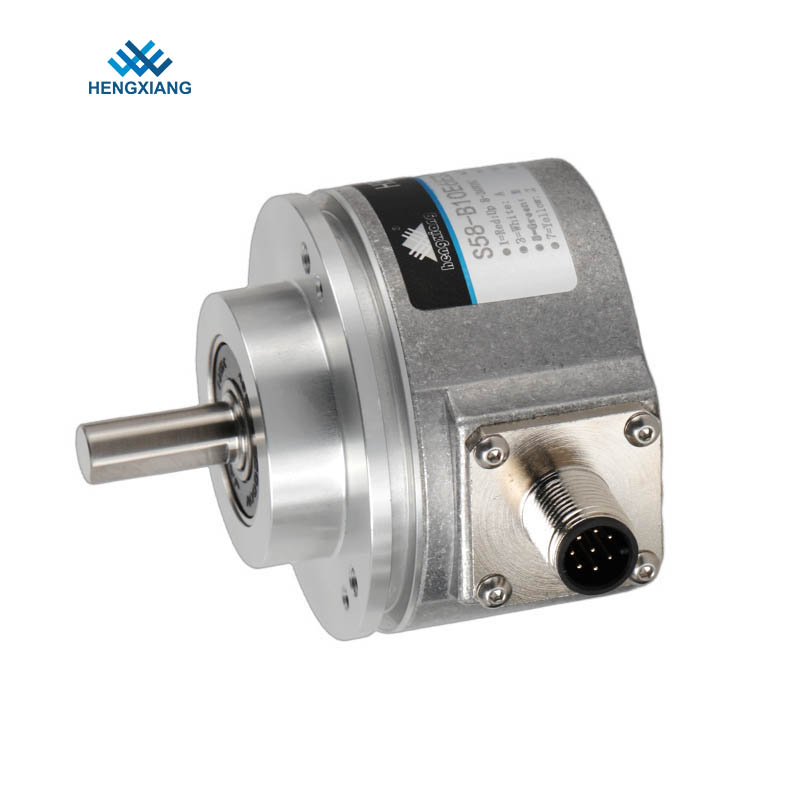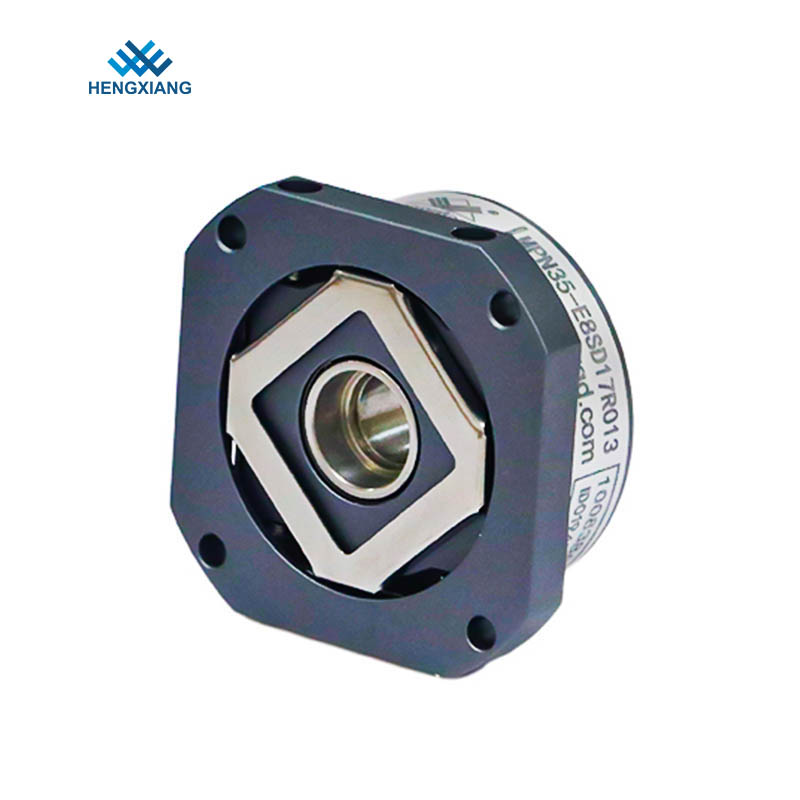Can incremental optical encoders accurately detect minute angular changes and meet the demands of precision motion control?
Release Time : 2025-10-04
In modern industrial automation and precision manufacturing, the demand for motion control precision has reached unprecedented levels. Whether it's the tool path of a CNC machine tool, the joint positioning of a robotic arm, the color registration of a printing machine, or the wafer handling of semiconductor equipment, every tiny deviation in motion can affect the quality and performance of the final product. In this context, the ability of the incremental optical encoder, a core component for position and velocity feedback, to accurately detect minute angular changes directly determines whether the entire control system can achieve high-precision, highly responsive dynamic adjustment. Solid-shaft incremental optical encoders, with their stable mechanical connections and advanced optical sensing technology, are key to meeting this demand.
The operating principle of an incremental optical encoder is based on photoelectric conversion and pulse counting. It incorporates a precisely engraved grating disk. When a motor or rotating shaft drives the encoder, light passes through the fine gaps in the grating disk, creating a regular pattern of light and dark, which is converted by the receiver into an electrical pulse signal. Each pulse represents a fixed unit of angular displacement. The control system calculates the rotation angle by accumulating the number of pulses and determines the rotation speed by the pulse frequency. Therefore, the minimum angular change an encoder can resolve depends on the density of the lines on the grating disk and the accuracy of its signal processing. High-quality incremental encoders utilize high-resolution gratings and stable light sources to produce clear, discernible pulse outputs within extremely small rotational angles, enabling the sensitive detection of minute angular changes.
This high sensitivity is crucial in practical applications. For example, in closed-loop control of servo motors, the controller requires real-time information about the actual rotor position to precisely adjust the current and achieve accurate positioning. If the encoder cannot detect even subtle angular deviations, the system will experience lag or oscillation, leading to inaccurate positioning, track deviation, or vibration and noise. High-precision incremental encoders, on the other hand, provide continuous and detailed position feedback, enabling the controller to promptly correct errors and ensure smooth motion and responsiveness. They maintain stable signal output even at low speeds or during fine-tuning, avoiding "creep" or "jumping."
Encoder stability also impacts detection accuracy. Solid shaft construction provides a robust guarantee for this. Compared to hollow shafts or flexible couplings, solid shafts offer greater rigidity and torsional strength, ensuring no relative slip or elastic deformation between the encoder shaft and the drive shaft. This rigid connection eliminates angular measurement errors caused by mechanical play or torsional deformation, ensuring that the feedback signal truly reflects the actual motion state. Furthermore, solid shafts are typically made of wear-resistant alloys and undergo precision machining to ensure that the shaft ends remain free of deformation and wear during long-term use, maintaining high-precision operation.
Even in complex operating conditions, encoders must also resist external interference to maintain signal purity. High-quality incremental encoders utilize sealed optical cavities to prevent dust and oil mist from intruding into the optical path, preventing signal interruption or bit errors caused by contamination. Metal housings and shielded circuits effectively suppress electromagnetic interference, ensuring clear phases and sharp edges for the A and B phase signals, facilitating accurate counting and direction determination by the controller. These design details collectively ensure that the encoder can stably and reliably detect minute angular changes even during long-term operation.
In high-end equipment, this precision detection capability has become a core element in enhancing product competitiveness. It not only improves machining accuracy and repeatability, but also enhances the system's dynamic response and operational smoothness, providing solid technical support for applications such as intelligent manufacturing, precision assembly, and high-speed sorting.
In summary, the incremental optical encoder, through the synergistic effect of high-resolution gratings, a stable optical system, and a rigid solid shaft structure, enables precise detection of minute angular changes. It not only records rotational motion but also serves as the cornerstone of precision control. Its acute perception infuses modern industrial equipment with precision and reliability.
The operating principle of an incremental optical encoder is based on photoelectric conversion and pulse counting. It incorporates a precisely engraved grating disk. When a motor or rotating shaft drives the encoder, light passes through the fine gaps in the grating disk, creating a regular pattern of light and dark, which is converted by the receiver into an electrical pulse signal. Each pulse represents a fixed unit of angular displacement. The control system calculates the rotation angle by accumulating the number of pulses and determines the rotation speed by the pulse frequency. Therefore, the minimum angular change an encoder can resolve depends on the density of the lines on the grating disk and the accuracy of its signal processing. High-quality incremental encoders utilize high-resolution gratings and stable light sources to produce clear, discernible pulse outputs within extremely small rotational angles, enabling the sensitive detection of minute angular changes.
This high sensitivity is crucial in practical applications. For example, in closed-loop control of servo motors, the controller requires real-time information about the actual rotor position to precisely adjust the current and achieve accurate positioning. If the encoder cannot detect even subtle angular deviations, the system will experience lag or oscillation, leading to inaccurate positioning, track deviation, or vibration and noise. High-precision incremental encoders, on the other hand, provide continuous and detailed position feedback, enabling the controller to promptly correct errors and ensure smooth motion and responsiveness. They maintain stable signal output even at low speeds or during fine-tuning, avoiding "creep" or "jumping."
Encoder stability also impacts detection accuracy. Solid shaft construction provides a robust guarantee for this. Compared to hollow shafts or flexible couplings, solid shafts offer greater rigidity and torsional strength, ensuring no relative slip or elastic deformation between the encoder shaft and the drive shaft. This rigid connection eliminates angular measurement errors caused by mechanical play or torsional deformation, ensuring that the feedback signal truly reflects the actual motion state. Furthermore, solid shafts are typically made of wear-resistant alloys and undergo precision machining to ensure that the shaft ends remain free of deformation and wear during long-term use, maintaining high-precision operation.
Even in complex operating conditions, encoders must also resist external interference to maintain signal purity. High-quality incremental encoders utilize sealed optical cavities to prevent dust and oil mist from intruding into the optical path, preventing signal interruption or bit errors caused by contamination. Metal housings and shielded circuits effectively suppress electromagnetic interference, ensuring clear phases and sharp edges for the A and B phase signals, facilitating accurate counting and direction determination by the controller. These design details collectively ensure that the encoder can stably and reliably detect minute angular changes even during long-term operation.
In high-end equipment, this precision detection capability has become a core element in enhancing product competitiveness. It not only improves machining accuracy and repeatability, but also enhances the system's dynamic response and operational smoothness, providing solid technical support for applications such as intelligent manufacturing, precision assembly, and high-speed sorting.
In summary, the incremental optical encoder, through the synergistic effect of high-resolution gratings, a stable optical system, and a rigid solid shaft structure, enables precise detection of minute angular changes. It not only records rotational motion but also serves as the cornerstone of precision control. Its acute perception infuses modern industrial equipment with precision and reliability.







